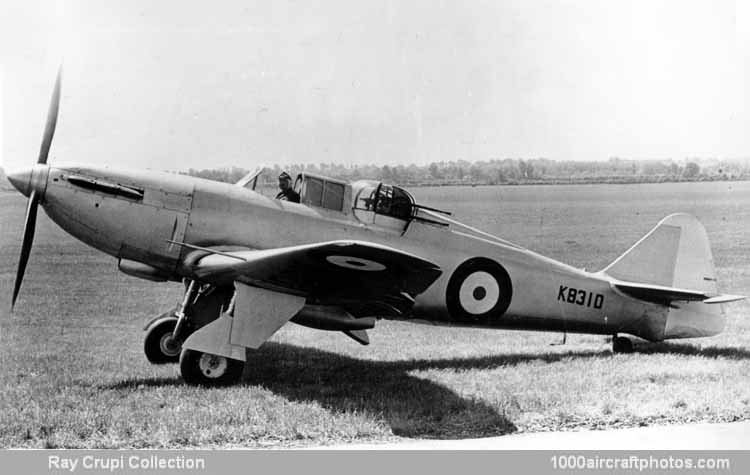01/31/2013. Remarks by Johan Visschedijk: "Notable as the first RAF fighter in squadron service with a four-gun turret, the Defiant was designed to Air Ministry Spec. F. 9/35 and the prototype, s/n K8310, made its first flight on August 11, 1937. The first production aircraft (s/n L6950) to Spec. 5/37, flew on July 30, 1939. The Defiant (with its contemporary, the Hawker Hotspur, which did not enter service) introduced a new tactical conception in two-seat fighters whereby no forward armament was carried and all offensive power concentrated in the rear cockpit.
No. 264 Squadron, who received the first Defiants in December 1939 and first took them into action on May 12, 1940, found that this idea paid handsome dividends during early engagements. By May 31 they had shot down 65 enemy aircraft, mainly over Dunkirk against bomber formations. But the success was short-lived, as the Defiant was no match for single-seat fighters. Losses mounted alarmingly, and in August it was decided to withdraw the Defiant from daylight operations and to use it as a night-fighter. In this role, equipped with A.I. radar, it did well and had the highest number of 'kills' per interception of any night-fighter type in the winter of 1940-1941.
Production of the Defiant ceased in February 1943, after 1,064 had been built, comprised of 713 F.Mk.I with 1,030 hp Merlin III engines, 210 F.Mk.II with Merlin XX and 140 TT.Mk.I target-tugs. The prototype Defiant F.Mk.II (s/n N1550) flew on July 20, 1940 and deliveries commenced in February 1941. From April 1942 about 150 F.Mk.Is were converted to TT.Mk.III target-tugs, some being tropicalized for service in the Middle East and Far East. About 50 Defiant F.Mk.Is were also retrospectively modified for Air/Sea Rescue duties.
As well as target-towing, the Defiant in its later days also saw extensive service with Air Gunnery Schools, at Operational Training Units and with Air/Sea Rescue Squadrons. It was also tried, briefly, with No. 2 Squadron on Army Co-operation duties."
